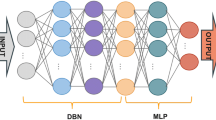Abstract
Ambient assistive living environments require sophisticated information fusion and reasoning techniques to accurately identify activities of a person under care. In this paper, we explain, compare and discuss the application of two powerful fusion methods, namely dynamic Bayesian networks (DBN) and Dempster-Shafer theory (DST), for human activity recognition. Both methods are described, the implementation of activity recognition based on these methods is explained, and model acquisition and composition are suggested. We also provide functional comparison of both methods as well as performance comparison based on the publicly available activity dataset. Our findings show that in performance and applicability, both DST and DBN are very similar; however, significant differences exist in the ways the models are obtained. DST being top-down and knowledge-based, differs significantly in qualitative terms, when compared with DBN, which is data-driven. These qualitative differences between DST and DBN should therefore dictate the selection of the appropriate model to use, given a particular activity recognition application.
Similar content being viewed by others
References
J. Biswas, K. Sim, W. Huang, et al. Sensor based microcontext for mild dementia assistance[C]//Proceedings of the 3rd International Conference on Pervasive Technologies Related to Assistive Environments (PETRA). Samos, Greece, 2010: DOI 10.1145/1839294.1839318.
E. Kim, S. Helal, D. Cook. Human activity recognition and pattern discovery[J]. IEEE Pervasive Computing, 2010, 9(1): 48–53.
D. Lymberopoulos, T. Teixeira, A. Savvides. Macroscopic human behavior interpretation using distributed imager and other sensors[J]. Proceedings of the IEEE, 2008, 96(10): 1657–1677.
K. P. Murphy. Dynamic Bayesian Networks: Representation, Inference and Learning[D]. Berkeley: University of California, 2002.
G. Shafer. A Mathematical Theory of Evidence[M]. Princeton: Princeton University Press, 1976.
A. Tolstikov. Application-level Quality of Service and Information Quality Provisioning in Sensor Networks[D]. Singapore: National University of Singapore, 2010.
X. Hong, C. Nugent, M. Mulvenna, et al. Evidential fusion of sensor data for activity recognition in smart homes[J]. Pervasive and Mobile Computing, 2009, 5(3): 236–252.
Z. Ghahramani. Learning dynamic bayesian networks[M]. Adaptive Processing of Sequences and Data Structures. Berlin: Springer-Verlag, 1997: 168–197.
A. P. Dempster, N. M. Laird, D. B. Rubin. Maximum likelihood from incomplete data via the EM algorithm[J]. Journal of the Royal Statistical Society: Series B, 1977, 39(1): 1–8.
M. Perkowitz, M. Philipose, D. J. Patterson. Mining models of human activities from the web[C]//Proceedings of the 13th International World Wide Web Conference (www’ 04). New York: ACM Press, 2004: 573–582.
T. L. M. van Kasteren, A. K. Noulas, G. Englebienne, et al. Accurate activity recognition in a home setting[C]//Proceedings of the 10th International Conference on Ubiquitous Computing (Ubicomp’ 08). New York: ACM Press, 2008: 1–8.
Author information
Authors and Affiliations
Corresponding author
Additional information
Andrei TOLSTIKOV is a research fellow at the Institute for Infocomm Research, Singapore. He received his M.S. degree in Applied Mathematics and Physics from Moscow Institute of Physics and Technology, Russia, and Ph.D. degree in Electrical and Computer Engineering from National University of Singapore. His research interests are in the areas of application-level quality of service, information quality in sensor networks and application of sensor networks for ambient intelligence.
Xin HONG holds a B.S. honors degree from Fudan University in China and a Ph.D. degreee in Artificial Intelligence from the University of Ulster, U.K. She is currently a research associate at the School of Computing and Mathematics at the University of Ulster. Her research interests include reasoning under uncertainty, intelligent diagnosis, pattern recognition, information fusion, and pervasive computing. Her recent research activities focus on technology development and applications for improving quality of life in independent living for the elderly.
Jit BISWAS is a senior scientist in the Networking Protocols Department at the A*Star Institute of Infocomm Research (I2R), Singapore, where he is the principal investigator of Healthcare projects under the program entitled “Intelligent Systems for Personalized and Connected Healthcare (INSPECH)”. In the past, Dr. Biswas was the principal investigator of projects in the Optical Networking Focus Interest Group, and UWB-Sentient Computing. His areas of work include healthcare, context awareness, distributed computing and computer networking and telecommunications. He has also served as the secretary of the IEEE P1520.2 and P1520.3 standardization projects, on application programming interfaces for networks. Dr. Biswas has a Bachelor’s degree in Electrical and Electronics Engineering from BITS, Pilani (India), a diploma in Industrial Engineering from the NITIE, Mumbai, a Master’s degree in Computer Science from the SMU Dallas, and a Ph.D. degree in Computer Science from the UT Austin.
Chris NUGENT is a professor of Biomedical Engineering at the University of Ulster. He received a bachelor’s degree in Engineering in Electronic Systems and Ph.D. in Biomedical Engineering both from the University of Ulster. His research within biomedical engineering addresses the themes of technologies to support independent living, medical decision support systems specifically in the domain of computerized electrocardiology and the development of Internet based healthcare models. He has published extensively in these areas with the work spanning theoretical, clinical and biomedical engineering domains.
Liming CHEN is a lecturer at the School of Computing and Mathematics, University of Ulster, U.K. He received his B.S. and M.S. degrees in Computing Engineering from Beijing Institute of Technology, China, and Ph.D. degree in Artificial Intelligence from De Montfort University, U.K. His current research interests include the semantic technologies, ontology enabled knowledge management, intelligent agents, information/knowledge fusion and reasoning, semantic sensor networking, assistive technologies and their applications in smart homes and intelligent environments.
Guido PARENTE received a M.S. degree in Computer Engineering from the University of Florence in Italy. He is currently a research associate in the School of Computing and Mathematics at the University of Ulster. His research interests are mathematical modelling and software development for Healthcare, and ambient assisted living system.
Rights and permissions
About this article
Cite this article
Tolstikov, A., Hong, X., Biswas, J. et al. Comparison of fusion methods based on DST and DBN in human activity recognition. J. Control Theory Appl. 9, 18–27 (2011). https://doi.org/10.1007/s11768-011-0260-7
Received:
Published:
Issue Date:
DOI: https://doi.org/10.1007/s11768-011-0260-7




